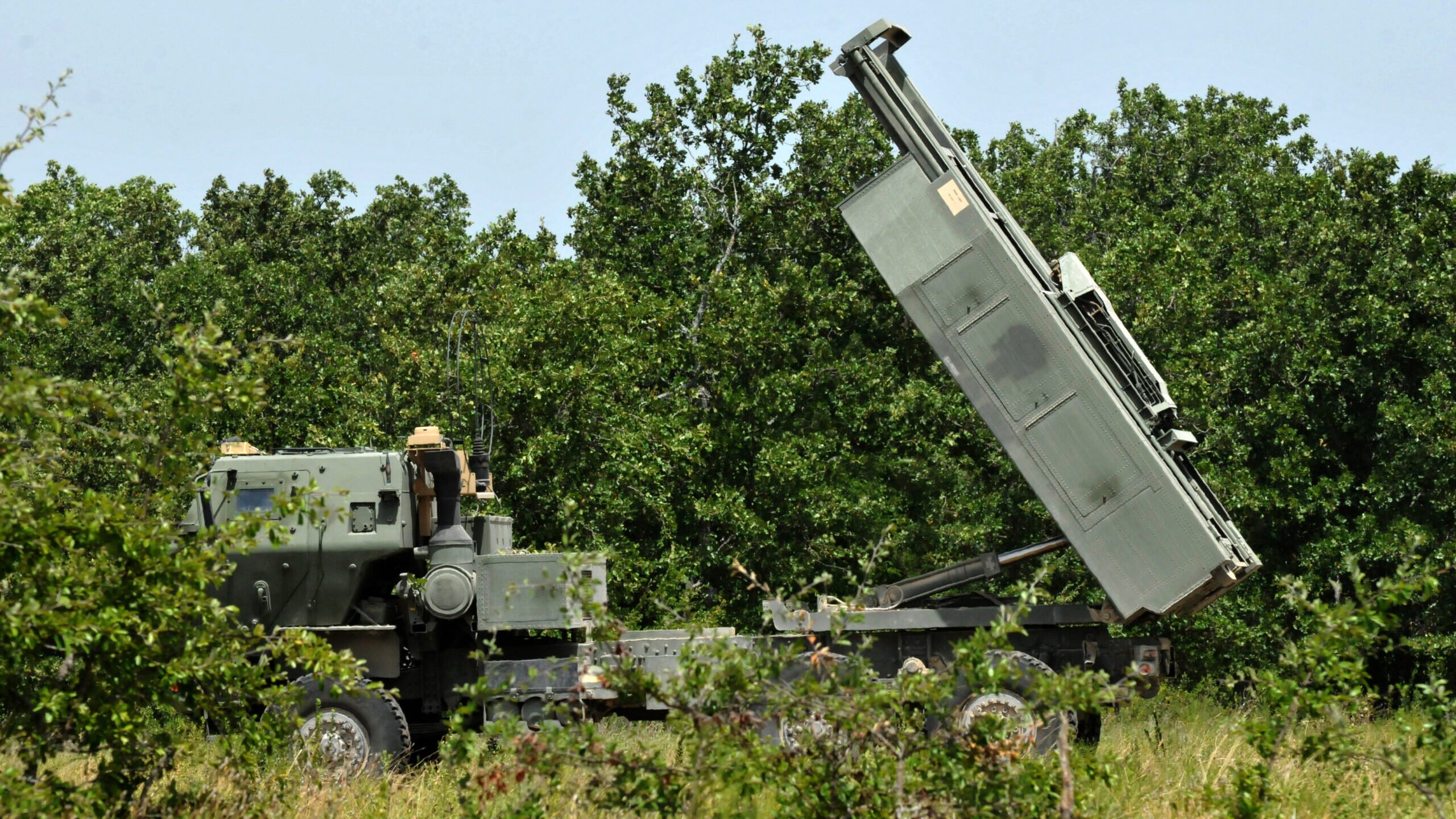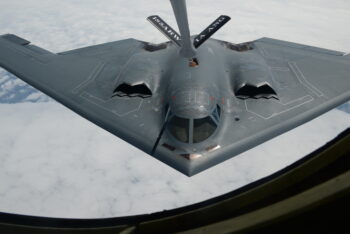
Soldiers with the 4th Battalion of the 133rd Field Artillery Regiment rehearse launching operations with a M142 High Mobility Artillery Rocket System at Fort Hood, Texas, July 16, 2018. (U.S. Army National Guard/Michael Giles)
WASHINGTON — The US State Department has approved a possible Foreign Military Sale (FMS) case of High Mobility Artillery Rocket Systems (HIMARS) for Poland, in a deal that comes with an estimated price tag of $10 billion.
Like all FMS cases, the US Senate needs to allow it to move forward, and quantities and dollar values often change during negotiations. However, adding HIMARS would represent a major upgrade for a Polish military that has invested billions of dollars in defense equipment over the last year. Poland first announced its intention to purchase new HIMARS in May 2022.
HIMARS, along with other artillery systems, have become a sought-after commodity since Russia’s invasion of Ukraine, in which Kyiv has used them to devastating effect. However, Washington has been reluctant to provide the long-range ATACMS missiles that can go with the system to Kyiv, reportedly over concerns it could be used to strike into Russian territory and escalate the conflict.
For Poland, there appear to be no such questions. The Defense Security Cooperation Agency notification covers 18 M142 HIMARS launchers and 45 ATACMS missile systems. Also included are 461 M30A2 Guided Multiple Launch Rocket System Alternative Warhead (GMLRS-AW) pods with Insensitive Munitions Propulsion System (IMPS), 521 M31A2 Guided Multiple Launch Rocket System Unitary (GMLRS-U) pods with Insensitive Munitions Propulsion System (IMPS), and 532 XM403 Guided Multiple Launch Rocket System Extended Range Alternative Warhead (GMLRS-ER AW), per today’s Defense Security Cooperation Agency announcement.
RELATED: Poland’s top general, armed with ‘suitcases’ full of money, looks to replenish stocks
“The proposed sale will improve Poland’s military goals of updating capability while further enhancing interoperability with the United States and other allies,” states the DSCA, referring to the Lockheed Martin-produced weapons. “Poland intends to use these defense articles and services to modernize its armed forces and expand its capability to strengthen its homeland defense and deter regional threats.”
HIMARS would become yet another addition to Poland’s modernization shopping spree. Since the Ukraine conflict began, Warsaw has bought AH-64 Apache attack helicopters, purchased tanks, howitzers and aircraft from South Korea, doubled down on its previous Patriot air defense system buy and leased MQ-9 Reapers, among others.
Specific to artillery, Poland agreed last year to purchase 212 South Korean-made K9A1 howitzers, together with the ammunition, training and logistics, for approximately PLN 11.4 billion ($2.32 billion), with deliveries happening through 2026. Perhaps more interesting is that the Poles signed a deal in October with South Korea for 288 K239 Chunmoo K-MLRS (Korean Multiple Launch Rocket System) units — with Polish defense minister Mariusz Błaszczak expressly tying the decision to buy the weapons to the inability to procure more HIMARS.
“In 2019, an agreement with the United States to acquire the HIMARS for the Polish Armed Forces was signed. The delivery of this equipment is scheduled for the next year. We submitted an inquiry for larger deliveries, but unfortunately due to limited industrial capabilities, it will not be possible for the equipment to be delivered in a satisfactory timeframe,” Błaszczak said in October. “Therefore, we started talks with South Korea, our reliable partner, which resulted in the signing of a framework contract for the delivery of K239 Chunmoo today.”
“Chunmoo have very similar characteristics to the HIMARS. It is a very good weapon, it is very good equipment, and I think that our joint Polish-Korean success is that the first Chunmoo squadron will be delivered to Poland next year,” he added.
The DSCA notification today doesn’t say when the new tranche of HIMARS is expected to be delivered.
Elbit’s new Red Sky air defense system goes public with first customer
The system includes a radar, as well as links to a 30mm gun and missile system for downing threats within ranges of seven kilometers and 15,000 feet, according to a company executive.


























